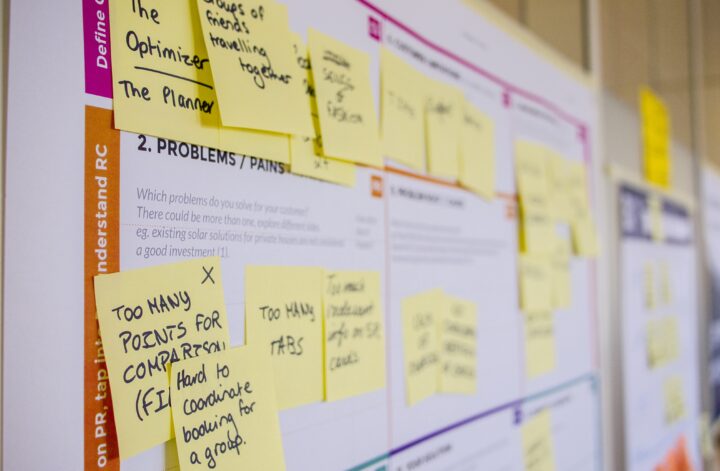Let’s start with a story. Meet Sarah, a young homeowner who decided to transform her plain backyard into a stunning outdoor oasis. She hired Jake, a local contractor, to bring her vision to life. Jake promised to complete the project in 4 weeks for $4,000. Simple enough, right? But like any project, things didn’t go exactly as planned, and this is where the concept of earned value comes in. Stick with me—by the end of this story, you’ll have a solid understanding of what earned value is and why it’s such a game-changer in project management.
Week 1: Breaking Ground
Jake kicked things off by clearing the yard and laying the foundation for a new patio. Sarah was thrilled to see progress, and Jake assured her that they were on track. At the end of Week 1, Jake submitted his first update: the work was 25% complete. Sarah paid Jake $1,000, happy that the project seemed to be moving along as planned.
But here’s the twist: while Jake said the project was 25% done, Sarah wasn’t so sure. She decided to consult her friend Mia, who happened to be a project manager. Mia introduced Sarah to the concept of earned value.
What is Earned Value?
Mia explained that earned value (EV) is a way to measure project progress objectively. Instead of relying on gut feelings or vague estimates, EV looks at the value of the work actually completed compared to the project’s total budget.
“Think of it this way,” Mia said. “If Jake’s project is worth $4,000 and is supposed to be 25% done, then he should have completed $1,000 worth of work by now. But has he?”
Sarah’s eyebrows shot up. “How do I figure that out?” she asked. Mia explained that Sarah would need to assess the work done so far and compare it to the plan.
Week 2: Trouble Brewing
By the end of Week 2, Jake reported that they had completed 50% of the work. Sarah paid another $1,000, bringing the total paid so far to $2,000. But when Sarah looked at the backyard, something didn’t feel right. The patio wasn’t finished, the garden beds weren’t started, and the materials for the fence hadn’t even arrived.
Sarah called Mia again, frustrated. “Jake says we’re halfway done, but it doesn’t look like it.” Mia grinned. “This is why earned value is so useful! Let’s calculate it.”
Breaking It Down
Mia grabbed a piece of paper and broke it into three parts:
- Planned Value (PV): This is how much work should have been completed by now, according to the plan. If Jake promised to finish 50% of the project by Week 2, then the PV is $2,000 (50% of the $4,000 total budget).
- Earned Value (EV): This is the value of the work that’s actually been completed. Looking at the yard, it was clear that only the patio foundation—about 30% of the total work—was done. That meant the EV was $1,200 (30% of $4,000).
- Actual Cost (AC): This is how much Sarah had paid so far: $2,000.
Mia then showed Sarah how to calculate some key metrics:
- Cost Performance Index (CPI): EV / AC = $1,200 / $2,000 = 0.6
- A CPI of less than 1 means the project is over budget.
- Schedule Performance Index (SPI): EV / PV = $1,200 / $2,000 = 0.6
- An SPI of less than 1 means the project is behind schedule.
Week 3: Course Correction
Armed with these numbers, Sarah confronted Jake. “You’ve only done $1,200 worth of work, but I’ve already paid you $2,000. Plus, we’re behind schedule. What’s going on?” Jake admitted that he’d underestimated the time and resources needed for the patio and promised to double his efforts to get back on track.
By the end of Week 3, Jake had completed the patio and started on the garden beds. Sarah calculated the new EV: $2,400 (60% of $4,000). The project was still over budget and behind schedule, but the gap was starting to close.
The Final Stretch
In Week 4, Jake finished the garden beds and built the fence. When Sarah ran the final numbers, she saw that the EV now matched the PV at $4,000. The project was complete! However, the AC ended up at $4,500, meaning the project had gone 12.5% over budget. Still, Sarah was thrilled with her beautiful new backyard.
Why Earned Value Matters
This story illustrates why earned value is such a powerful tool for managing projects. By looking at the relationship between planned value, earned value, and actual cost, you can:
- Spot budget overruns before they spiral out of control.
- Identify schedule delays early enough to take corrective action.
- Communicate progress clearly to stakeholders (like Sarah did with Mia).
Whether you’re managing a backyard makeover or a multi-million-dollar project, earned value gives you the insights you need to stay on top of things. So next time you’re wondering how a project is really going, take a page from Sarah’s book and do the math.




